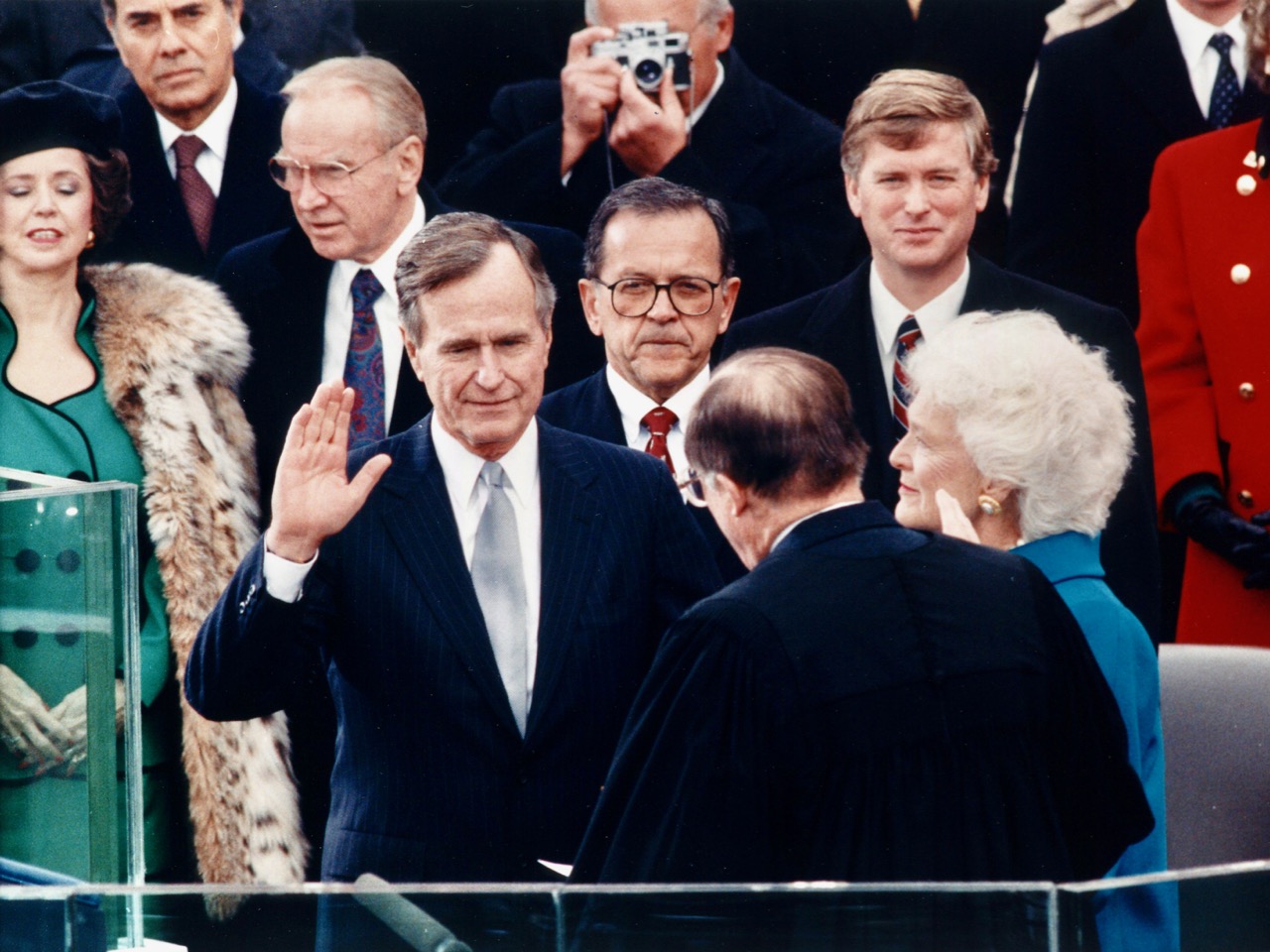By Acee Agoyo
Though the late
George Herbert Walker Bush only served one term as president of the United States his four years in office saw a number of policy and public relations gains for Indian Country.
Bush, who died on Friday at the age of 94, was the first president to issue a proclamation establishing November as
National American Indian Heritage Month, now known as
Native American Heritage Month. The country had been recognizing the
first Americans through week-long commemorations but that changed in 1990.
"Our Constitution affirms a special relationship between the federal government and Indian tribes and -- despite a number of conflicts, inequities, and changes over the years -- our unique government-to-government relationship has endured," Bush wrote in his
proclamation on November 14, 1990. "In recent years, we have strengthened and renewed this relationship."
"Today we reaffirm our support for increased Indian control over tribal government affairs, and we look forward to still greater economic independence and self-sufficiency for Native Americans," he continued.
Bush followed up that proclamation with another historic development, this one timed to a more ominous occasion. He declared the
Year of the American Indian on March 2, 1992, calling attention to the resilience of indigenous peoples in light of repeated attempts to eradicate them over the prior 500 years.
"During 1992, we will honor this country's Native peoples as vital participants in the history of the United States," Bush wrote. "This year gives us the opportunity to recognize the special place that Native Americans hold in our society, to affirm the right of Indian tribes to exist as sovereign entities, and to seek greater mutual understanding and trust."
"Therefore, we gratefully salute all American Indians, expressing our support for tribal self-determination and assisting with efforts to celebrate and preserve each tribe's unique cultural heritage," the declaration read.
 Mourners pay tribute to the late George H. W. Bush as his body lies in state at the U.S. Capitol on December 3, 2018. Photo: Joyce N. Boghosian / White House
Mourners pay tribute to the late George H. W. Bush as his body lies in state at the U.S. Capitol on December 3, 2018. Photo: Joyce N. Boghosian / White House
But Bush's actions in office weren't just symbolic. During his tenure, he signed a whopping 45 bills and resolutions into law, with his administration helping to secure some of most significant policy achievements since the self-determination era took hold in the 1970s.
The
lengthy list of signed legislation includes the
Indian Arts and Crafts Act, the
Native American Graves Protection and Repatriation Act and the
National Museum of the American Indian Act, which established the
landmark institution in Washington, D.C. The three statutes -- all signed during Bush's first two years in office -- are among the most enduring in federal Indian law and policy.
“President George H.W. Bush demonstrated tremendous leadership in the highest office in the world,”
Navajo Nation President Russell Begaye said on Tuesday.
Bush also reversed the devastating effects of the termination era, signing bills which restored federal recognition to the
Coquille Tribe and to the
Ponca Tribe. And he struck back against a
negative U.S. Supreme Court decision by recognizing the rights of tribes to prosecute all Indians on their territories, embraced the
preservation of Native languages that were once targeted for elimination and expanded on self-determination by establishing a self-governance project at the
Department of the Interior that was later made permanent after tribes proved it was a success.
“President Bush ushered in a new era of collaboration and understanding of the Native peoples in this nation," said
Sen. John Hoeven (R-North Dakota), the chairman of the
Senate Committee on Indian Affairs. "He signed many pieces of legislation into law which recognized tribal sovereignty, promoted tribal cultures and languages, reformed public safety, enhanced natural resources, including land restoration, and facilitated job creation."
"President Bush’s legacy will live on through these laws and we thank him for his service and leadership in promoting an enduring and meaningful government-to-government relationship between the United States and Indian tribes,” said Hoeven.
The nation continues to pay tribute to Bush’s legacy as he
lies in state at the U.S. Capitol. He will remain there through Wednesday morning, before his body is taken to the National Cathedral for the
funeral service.
Additional services will take place in Texas, where he resided when he began a long career in public service by winning election to the U.S. House of Representatives in 1967. From there, he served as the U.S. Ambassador to the United Nations, as chairman of the Republican National Committee, as the head of U.S. relations with China and as the director of the Director of Central Intelligence.
Bush later served for two terms as vice president under the late president Ronald Reagan, whose dealings with Indian Country were often rocky. He took office as the 41th president of the U.S. on January 20, 1989.
Burial will take place at the
George H.W. Bush Presidential Library and Museum on Thursday.
“I offer my sincere respect and pay tribute to his legacy," said President Begaye of the Navajo Nation. "May God bless him and his family at this time.”
Join the Conversation


